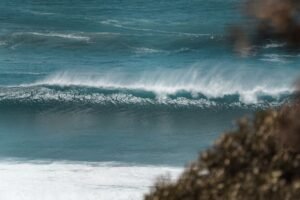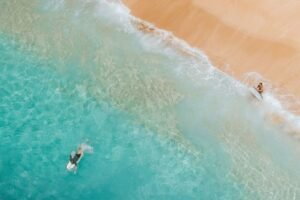
Surfing in Canada. Looking for the best surfing spots in Canada? While often overlooked in global surf guides, Canada offers some of the most unique, uncrowded, and scenic surf experiences in the world. From the rugged Pacific shores of British Columbia to the storm-driven swells of Nova Scotia, and even the freshwater waves of the Great Lakes, surfing in Canada is an unforgettable cold-water adventure.
Why Surfing in Canada Is Growing in Popularity
Despite Canada’s chilly reputation, its surf scene is growing steadily. Surfers from around the world are discovering Canada’s coastlines, drawn by the beautiful landscapes, uncrowded breaks, and year-round wave potential. What was once a niche sport in Canada is now an expanding culture, with surf communities thriving in British Columbia, Nova Scotia, and Ontario.
Tofino, British Columbia: The Best Place to Surf in Canada
When it comes to top surfing destinations in Canada, Tofino on Vancouver Island is the crown jewel. Widely regarded as Canada’s surf capital, Tofino offers consistent waves, stunning natural beauty, and a laid-back vibe.
Best Surf Spots in Tofino:
- Cox Bay – Great for advanced surfers chasing big winter swells.
- Chesterman Beach – A local favorite for intermediate and beginner surfers.
- Long Beach – Ideal for learning, with soft rolling waves and lots of space.
Tofino’s surf season peaks between September and March, when the Pacific Ocean delivers strong, consistent swells. During the summer, conditions mellow out, making it ideal for beginners and surf schools.
Surfing in Nova Scotia: East Coast Swells
On the Atlantic side, Lawrencetown Beach in Nova Scotia stands out as one of the best surfing spots in Eastern Canada. Just a 30-minute drive from Halifax, this beach offers clean waves, passionate locals, and a unique blend of wilderness and culture.
Highlights of Surfing in Nova Scotia:
- Fall (September to November) is the best time to surf here, with powerful hurricane swells.
- Winter surfing is possible with the right gear.
- The local surf community is welcoming, tight-knit, and environmentally conscious.
Beyond Lawrencetown, Nova Scotia’s coastline hides countless secret surf breaks—perfect for explorers and experienced surfers looking for solitude and challenge.
Great Lakes Surfing: Freshwater Surf Culture in Canada
Not near an ocean? No problem. Surfing on the Great Lakes has exploded in popularity over the past decade. On Lake Huron, Lake Ontario, and Lake Superior, you’ll find dedicated freshwater surfers chasing wind-driven waves during stormy months.
Where to Surf on the Great Lakes:
- Sauble Beach – Reliable during fall storms.
- Kincardine – Great wave shape with a small but growing surf community.
- Bluffers Park (Toronto) – Urban freshwater surfing, ideal for quick sessions.
The best time to surf the Great Lakes is October through December, when wind patterns create powerful swells and snowflakes occasionally fall as you paddle out—Canada’s version of hardcore surf.
Is Winter Surfing in Canada Worth It?
Absolutely. Winter surfing in Canada is one of the most rewarding experiences for thrill-seeking surfers. Cold-water surf gear has improved immensely, with modern wetsuits (5/4mm to 6mm), gloves, boots, and hoods allowing surfers to comfortably ride waves even when the air is freezing.
Benefits of Surfing in Winter:
- Fewer crowds on the beaches and in the water.
- Cleaner, stronger waves.
- A peaceful, almost spiritual surf experience surrounded by nature.
While it may sound intimidating, many Canadian surfers look forward to winter sessions as the highlight of their surf year.
Canadian Surf Culture: Local, Laid-back, and Eco-Friendly
One thing that stands out about surfing in Canada is the authentic surf culture. It’s not about showing off—it’s about connection: with the ocean, with each other, and with the environment.
What Makes Canadian Surf Culture Unique:
- Focus on sustainability and clean oceans.
- Strong community bonds.
- Support for beginner surfers and local businesses.
- Female-focused events like Queen of the Peak in Tofino.
Whether you’re at a small surf shop in Lawrencetown or warming up by a fire pit after a session in Tofino, the Canadian surf culture welcomes everyone.
When Is the Best Time to Surf in Canada?
Timing depends on the region, but here’s a quick breakdown:
| Location | Best Surf Season |
| Tofino, BC | September to March |
| Nova Scotia | September to November |
| Great Lakes | October to December |
For the best waves and uncrowded sessions, fall is generally the sweet spot across the country.
Tips for First-Time Surfers in Canada
If you’re planning your first Canadian surf trip, keep these tips in mind:
- Wear proper gear: A good wetsuit is essential, even in summer.
- Book a surf lesson: Especially in places like Tofino and Lawrencetown.
- Check local forecasts: Websites like MagicSeaweed and Windy are useful.
- Respect surf etiquette and locals.
- Leave no trace: Keep beaches clean and support eco-friendly businesses.
Final Thoughts: Why You Should Try Surfing in Canada
Canada may not be the first name you associate with surfing, but it offers something few other places can: raw beauty, untouched coastlines, and waves that reward your effort. Whether you’re standing up for the first time in Tofino or braving a snowy session on Lake Superior, surfing in Canada is about embracing nature and seeking joy in unexpected places.
The experience is not just about catching a wave—it’s about finding freedom, connecting with the land and sea, and being part of a humble, welcoming community. So next time you’re thinking about surf travel, consider heading north. Canada’s cold-water paradise might just be your next favorite surf destination.





